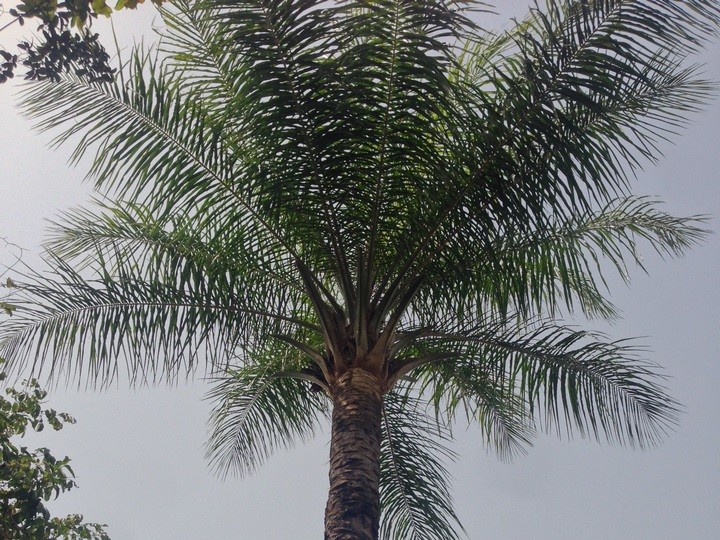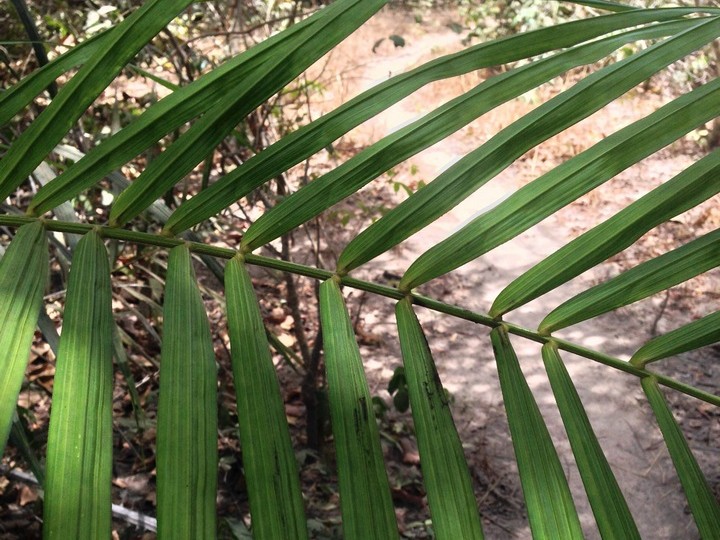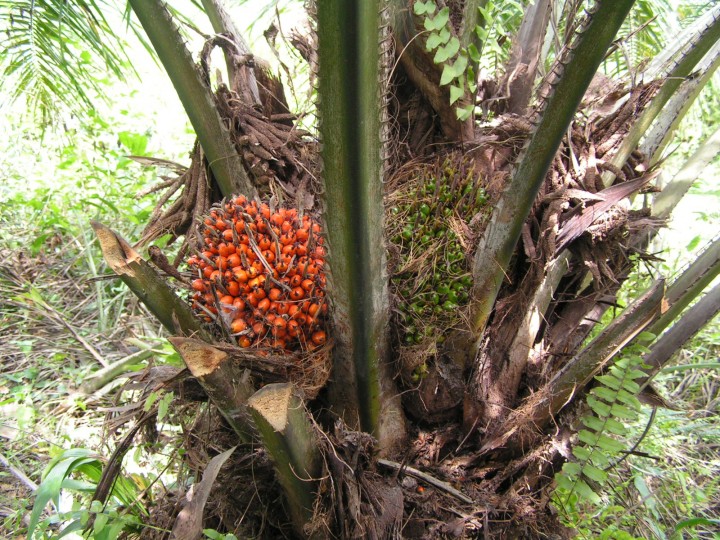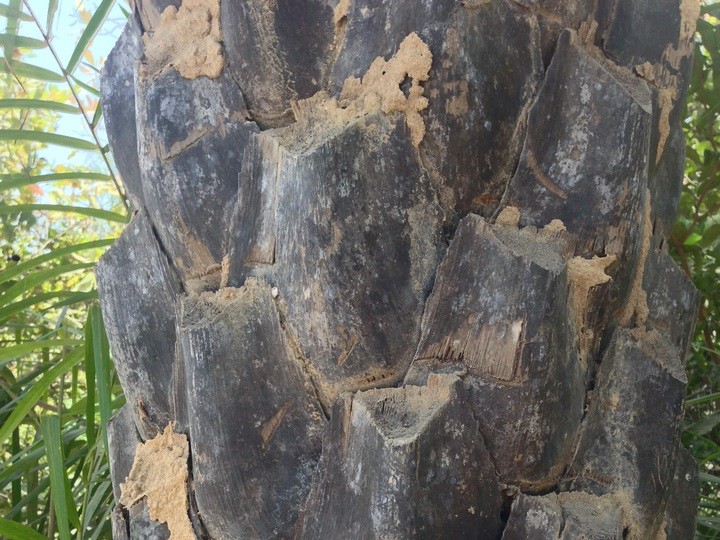Description
The Oil palm, also known by its scientific name, Elaeis guineensis, is a species of the Arecaceae family and of the Elaeis genus. Its name in Diola is Kaaful. There are several kinds of palm trees. The Oil Palm tree is native to tropical Africa. It needs a tropical climate to grow and it can develop by itself or close to other plants. The species can reach 25m in height. The palm tree is of the same family as the ‘rônier’. The two can be distinguished by three characteristics: the palm tree leaves are the shape of a comb; its stipe (strong stem or “false trunk”) is chapped; its fruit is red, the size of small cherries and clustered in bunches. Birds like the ‘mange-mils’ (‘millet eaters’) often nest at the tip of the leaves, which is hard for predators to access. Palm trees are often attacked by choker fig trees.
Uses
The palm tree gives two kinds of oil and an alcohol. The red palm oil is made of hot pressed fruit pulp. It is a favourite in local cuisine, for example in ‘candia soup’ (a soup made with okra and palm oil). Palm kernel oil is white. It is made with the kernel from the seeds and is also used in food as well as by industry (to make soaps and lubricants). Palm wine (‘bounouk’ in Diola) is made by fermenting palm tree sap. In traditional local architecture, hut roofs are made with palm tree leaves and trunks.
Did you know…
The non-fermented sap, rich with vitamins, was used to feed babies who had lost their mothers by the Diola of the Lower Casamance region.





